|
|
|
Sort Order |
|
|
|
Items / Page
|
|
|
|
|
|
|
| Srl | Item |
| 1 |
ID:
150019
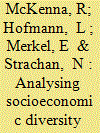

|
|
|
|
|
| Summary/Abstract |
Adequately accounting for interactions between Low Carbon Technologies (LCTs) at the building level and the overarching energy system means capturing the granularity associated with decentralised heat and power supply in residential buildings. The approach presented here adds novelty in terms of a realistic socioeconomic differentiation by employing dwelling/household archetypes (DHAs) and neighbourhood clusters at the Output Area (OA) level. These archetypes are combined with a mixed integer linear program (MILP) to generate optimum (minimum cost) technology configurations and operation schedules. Even in the baseline case, without any LCT penetration, a substantial deviation from the standard load profile (SLP) is encountered, suggesting that for some neighbourhoods this profile is not appropriate. With the application of LCTs, including heat pumps, micro-CHP and photovoltaic (PV), this effect is much stronger, including more negative residual load, more variability, and higher ramps with increased LCT penetration, and crucially different between neighbourhood clusters. The main policy implication of the study is the importance of understanding electrical load profiles at the neighbourhood level, because of the consequences they have for investment in the overarching energy system, including transmission and distribution infrastructure, and centralised generation plant. Further work should focus on attaining a superior socioeconomic differentiation between households.
|
|
|
|
|
|
|
|
|
|
|
|
|
|
|
|
| 2 |
ID:
097439
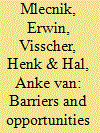

|
|
|
|
|
| Publication |
2010.
|
| Summary/Abstract |
Promoting energy efficiency in the building sector is essential if the agreements of the Kyoto Protocol are to be honoured. Different initiatives for energy labelling of highly energy-efficient residential buildings have emerged throughout Europe as an essential method to stimulate market demand, to control grants or to ensure the quality of demonstration projects with excellent energy performance.
The paper identifies the barriers and opportunities for the further diffusion of labels for highly energy-efficient houses. A model based on the theory of the diffusion of innovation is developed to analyse perceived attributes of existing European labels. The paper investigates the innovation characteristics of existing labels in Europe, with a focus on advanced countries. The question of compatibility with the development of the European Energy Performance of Buildings Directive (EPBD) is examined in detail.
We found that the diffusion of emerging and already existing voluntary European labels for highly energy-efficient houses is needed. Their complexity can be lowered and relative advantage, trialability, observability, and compatibility can be increased. EPBD calculation procedures should be able to receive highly energy-efficient houses. In the framework of the recast of the EPBD, official recognition of existing voluntary labels is recommended.
|
|
|
|
|
|
|
|
|
|
|
|
|
|
|
|
| 3 |
ID:
112888


|
|
|
|
|
| Publication |
2012.
|
| Summary/Abstract |
The emergent industry of indoor Cannabis production - legal in some jurisdictions and illicit in others - utilizes highly energy intensive processes to control environmental conditions during cultivation. This article estimates the energy consumption for this practice in the United States at 1% of national electricity use, or $6 billion each year. One average kilogram of final product is associated with 4600 kg of carbon dioxide emissions to the atmosphere, or that of 3 million average U.S. cars when aggregated across all national production. The practice of indoor cultivation is driven by criminalization, pursuit of security, pest and disease management, and the desire for greater process control and yields. Energy analysts and policymakers have not previously addressed this use of energy. The unchecked growth of electricity demand in this sector confounds energy forecasts and obscures savings from energy efficiency programs and policies. While criminalization has contributed to the substantial energy intensity, legalization would not change the situation materially without ancillary efforts to manage energy use, provide consumer information via labeling, and other measures. Were product prices to fall as a result of legalization, indoor production using current practices could rapidly become non-viable.
|
|
|
|
|
|
|
|
|
|
|
|
|
|
|
|
| 4 |
ID:
176707
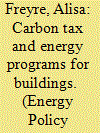

|
|
|
|
|
| Summary/Abstract |
Carbon tax is among the most intensively discussed topics in energy research and policy nowadays, but the question of using carbon tax revenue for environmental and energy policy purposes has received little attention so far. Currently the revenue generated from carbon tax has different usage in the countries worldwide, with only one quarter used for environmental and sustainable energy purposes. Against this background we study whether it can be advisable to use carbon tax revenue for financing energy efficiency and renewable energy (EERE) programs. Based on the case study of Switzerland, we demonstrate that such a policy approach could not only allow to achieve additional reduction of CO2 emissions, but also considerable net benefits to household sector with regard to reduction of heating costs, while having rather low program costs for individual households.
|
|
|
|
|
|
|
|
|
|
|
|
|
|
|
|
| 5 |
ID:
177398
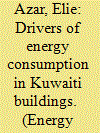

|
|
|
|
|
| Summary/Abstract |
Understanding and quantifying the drivers of energy consumption in buildings is an essential step to identify inefficiencies and guide energy conservation efforts and policies. While such efforts are common in western countries, they remain limited in the Middle East and North Africa (MENA) region, particularly in the State of Kuwait. This article presents the first systematic assessment of the drivers of energy consumption in Kuwaiti commercial and residential buildings. It presents a unique hybrid study approach combining data collected from 463 buildings with Building Performance Simulation (BPS) developed and validated to mimic the performance of archetype (i.e., typical) Kuwaiti buildings. Results identify the built-up area and the thermostat cooling setpoints as the main determinants of electric consumption, quantifying the exact relationships between these variables. For instance, a simple 2 °C increase in the thermostat cooling setpoint can lead to a more than 10% reduction in total energy use. Other parameters that are typically known to affect building performance, such as the type of Air Conditioning (AC) systems installed, did not show statistically significant effects. The findings helped derive important recommendations for the Kuwaiti authorities, covering the educational, technological, and policy-related dimensions of the challenges facing the building sector.
|
|
|
|
|
|
|
|
|
|
|
|
|
|
|
|
| 6 |
ID:
117236
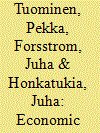

|
|
|
|
|
| Publication |
2013.
|
| Summary/Abstract |
This study estimates the economic effects of investing in energy efficiency in buildings on a national level. First conservation potentials in space heating for two different scenarios with different levels of investment in energy efficiency are quantified. This was done relying on statistical data and future projections of the development of the building stock. Then economic modeling was used to estimate the effects on energy sector and the economy at large. The results show that a rather modest increase resulting in a few percent rise in annual construction and renovation investments can decrease total primary energy consumption 3.8-5.3% by 2020 and 4.7-6.8% by 2050 compared to a baseline scenario. On the short term a slight decrease in the level of GDP and employment is expected. On the medium to long term, however, the effects on both would be positive. Furthermore, a significant drop in harmful emissions and hence external costs is anticipated. Overall, a clear net benefit is expected from improving energy efficiency.
|
|
|
|
|
|
|
|
|
|
|
|
|
|
|
|
| 7 |
ID:
166462
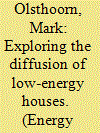

|
|
|
|
|
| Summary/Abstract |
Diffusion of low-energy houses is an important part of energy and climate policy in the European Union (EU) and in individual EU countries. Key barriers to the adoption of low-energy houses include additional construction costs and uncertainty surrounding actual energy and cost savings.
|
|
|
|
|
|
|
|
|
|
|
|
|
|
|
|
| 8 |
ID:
112883
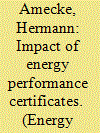

|
|
|
|
|
| Publication |
2012.
|
| Summary/Abstract |
The building sector accounts for about 40% of the final energy consumption in Germany. At the same time, the sector is regarded as one of the most cost-effective options for saving CO2 emissions. To target this potential, the European Union introduced energy performance certificates (EPC). EPCs should provide clear information about the energy performance of buildings to building purchasers, owners and tenants. This study analyses, in how far EPCs have helped purchasers of owner-occupied dwellings in Germany to incorporate energy efficiency in their purchasing decisions. The results suggest that the effectiveness of EPCs is limited. Main reasons are first, that the certificates are not helpful for understanding the financial implications of energy efficiency. Second, EPCs are not viewed for most buildings due to their legal status. Third, energy efficiency is only a minor purchasing criterion for dwelling purchases. The results of the study however also point to the potential of EPCs, as these barriers can be removed. From 2013 onwards the use of the EPC will be increased due to the new EU Energy Performance of Buildings Directive (EPBD). Changes to the design of the EPC could further increase the importance of energy performance certificates and of energy efficiency.
|
|
|
|
|
|
|
|
|
|
|
|
|
|
|
|
| 9 |
ID:
128337
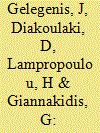

|
|
|
|
|
| Publication |
2014.
|
| Summary/Abstract |
The building sector in Greece presents a huge energy saving potential, the largest part of which is remaining unexploited. The recently enacted legislation for the energy performance of buildings, in combination with the financial support provided by funding programmes to low income families is expected to significantly boost the deployment of energy efficient technologies in the Greek domestic sector. The exploitation of these legal and financial instruments follows a formalised process of energy audits, resulting in buildings classification and in the submission of Energy Performance Certificates (EPCs) including suggestions to improve the dwellings' energy performance. The paper aims at an ex-ante evaluation of the market trends revealed by EPCs in Greece, in order to identify the perspectives of individual technologies and to assess the degree to which the certification procedure helps in improving the energy performance of buildings. The results indicate a strong trend towards less cost-effective technologies, revealing a sub-optimal allocation of financial resources and putting into risk the path towards the achievement of EU targets for 2020.
|
|
|
|
|
|
|
|
|
|
|
|
|
|
|
|
| 10 |
ID:
186471
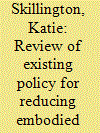

|
|
|
|
|
| Summary/Abstract |
The building sector is a significant contributor to global energy demand and greenhouse gas emissions and thus has a major role in combating climate change. To date, efforts to address this issue have focussed on reducing energy demand during building operation, resulting in significant reductions in this area. However, recent studies have shown that substantial improvements to operational energy efficiency have increased the relative significance of indirect or embodied energy demands and associated greenhouse gas emissions. Subsequently, policies addressing this next frontier of energy and emissions reductions are emerging. To understand different approaches and inform future development, this study reviews existing policy mechanisms targeting embodied energy and greenhouse gas emissions in the building sector for four countries – Australia, Canada, USA and United Kingdom. The study found that voluntary instruments dominate the policy landscape, with regulatory measures largely absent at national levels and confined to inconsistent application across lower levels of governance. Signals of change emerging from the analysis include growing private sector investment and increasing quantitative targets for reduction. The study concludes with the challenges facing this sector of energy governance, alongside recommendations for regulated caps, mandatory LCA reporting, prerequisite requirements in voluntary instruments, data accessibility and resolving methodological inconsistencies.
|
|
|
|
|
|
|
|
|
|
|
|
|
|
|
|
| 11 |
ID:
101500
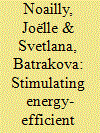

|
|
|
|
|
| Publication |
2010.
|
| Summary/Abstract |
In the Netherlands where the building sector accounts for 33% of carbon emissions, the government aims to halve the total energy use from buildings by 2030 compared to 1990 levels. To this end, the Dutch government has set specific goals in order to foster technological innovation related to energy efficiency in buildings. The objective of this paper is to explore the links between technological innovation and public policies in this sector over the last 30 years. The paper aims (1) to measure the evolution of innovations related to energy efficiency in buildings in the Netherlands using patent counts and (2) to provide a historical overview of the policy framework. Descriptive data on patenting activities show that the Netherlands have a clear comparative advantage in the field of energy-saving lighting technologies, mainly due to intensive patenting activities by Philips. High-efficiency boilers also represent a substantial share of Dutch innovation activities in this domain over the last decades. In many other fields (such as insulation, heat-pumps and cogeneration, solar boilers, etc.), however, Germany, Austria and Scandinavian countries rank much higher than the Netherlands. The descriptive analysis of Dutch energy policy shows an intensification of energy policy in the mid-1990s, followed by a slight decline after 2001. Overall, the simultaneous introduction of policy instruments makes it difficult to evaluate the effectiveness of policies. Also, the policy framework is characterized by the introduction of a large number of short-lived policy instruments and frequent policy changes. The lack of stability and continuity of energy policy may be damaging for innovation.
|
|
|
|
|
|
|
|
|
|
|
|
|
|
|
|
| 12 |
ID:
096722


|
|
|
|
|
| Publication |
2010.
|
| Summary/Abstract |
In the U.S., where buildings account for 40% of energy use, commercial buildings use more energy per unit area than ever before. However, exemplary buildings demonstrate the feasibility of much better energy performance at no additional first cost. This research examines one possible explanation for this inconsistency. The aim is to investigate whether the anchoring bias, which refers to our tendency to gravitate towards a pre-defined standard regardless of its relevance, influences energy performance goals in building design. The scope examines professionals who help set energy performance goals for U.S. buildings. Prior to being asked to set an energy performance goal, these professionals were randomly directed to one of three series of questions. One series set an anchor of 90% energy reduction beyond standard practice, one set a 30% anchor, and one set no anchor. Respondents exposed to the 90% anchor, and respondents exposed to no anchor at all, set higher energy performance goals than respondents exposed to the 30% anchor. These results suggest that building rating systems that only reward incremental energy improvements may inadvertently create anchors, thereby discouraging more advanced energy performance goals and inhibiting energy performance that is technically and economically feasible.
|
|
|
|
|
|
|
|
|
|
|
|
|
|
|
|
| 13 |
ID:
097515


|
|
|
|
|
| Publication |
2010.
|
| Summary/Abstract |
In the U.S., where buildings account for 40% of energy use, commercial buildings use more energy per unit area than ever before. However, exemplary buildings demonstrate the feasibility of much better energy performance at no additional first cost. This research examines one possible explanation for this inconsistency. The aim is to investigate whether the anchoring bias, which refers to our tendency to gravitate towards a pre-defined standard regardless of its relevance, influences energy performance goals in building design. The scope examines professionals who help set energy performance goals for U.S. buildings. Prior to being asked to set an energy performance goal, these professionals were randomly directed to one of three series of questions. One series set an anchor of 90% energy reduction beyond standard practice, one set a 30% anchor, and one set no anchor. Respondents exposed to the 90% anchor, and respondents exposed to no anchor at all, set higher energy performance goals than respondents exposed to the 30% anchor. These results suggest that building rating systems that only reward incremental energy improvements may inadvertently create anchors, thereby discouraging more advanced energy performance goals and inhibiting energy performance that is technically and economically feasible.
|
|
|
|
|
|
|
|
|
|
|
|
|
|
|
|
|
|
|
|
|